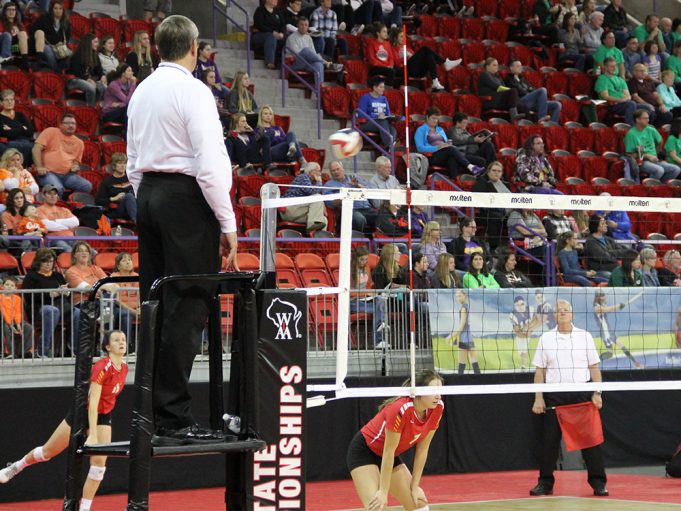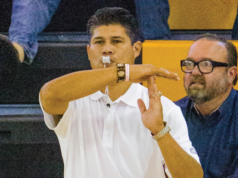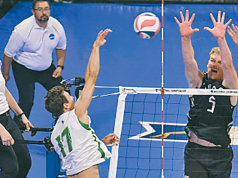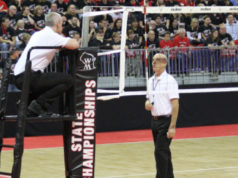What problem is most common among second referees? Some might say coaches chewing them out about questionable decisions or missed calls by the crew. A better guess would be tunnel vision.
When second referees glue their eyes to the net during rallies, hoping to catch a net or centerline violation, they can lose sight of other things happening on the court. Focusing on the net isn’t a second referee’s only responsibility. The second referee should also be aware of playing actions and faults away from the net.
Open up that vision. Spectators have the best view in the house. They see the entire court and all the action. Second referees are not spectators, but they need to open up their field of vision to do their job right.
The second referee has many duties, among other things: helping the first referee with four team contacts, illegal attacks or blocks by back-row players, libero playing actions, failed pancake attempts, and plays that may have been screened from the first referee. That’s more reason to tune in on the action instead of concentrating only on the net and centerline.
Before each serve, don’t lock in on the net. Scan the entire formation of the receiving team for overlaps. As play develops, there’s no need to pay attention to the net and centerline until the ball enters that vicinity. Then be on the blocking team’s side of the net and focus on the area of the net where the ball crosses.
Second referees should be on their toes to assist the first referee with calls. Take in everything occurring on the court. Transfer those eyes over to the action and anticipate what might happen next. That’s important. Sometimes it’s necessary to look through the net directly at the playing action.
As the attack unfolds, watch the play, not the net. Once the attacker is identified and feet placement in relation to the attack line is noted, or when a player might contact the net while playing the ball, that’s the proper time to shift our second referee eyes to the net and centerline. Focus on the blockers without ignoring the offensive players. Don’t follow the ball as it crosses beyond the blockers. Keep those eyes front and center until no player at the net can commit a fault. When all is clear, track down the ball quickly while transitioning sideways to the blockers’ side with side steps or a crossover first step, but not a Sunday stroll. Be in position before the second team contact and start all over again with a broad view to observe the entire playing action develop.
Take a wide-angle view to avoid tunnel vision.
What's Your Call? Leave a Comment:
Note: This article is archival in nature. Rules, interpretations, mechanics, philosophies and other information may or may not be correct for the current year.
This article is the copyright of ©Referee Enterprises, Inc., and may not be republished in whole or in part online, in print or in any capacity without expressed written permission from Referee. The article is made available for educational use by individuals.

















